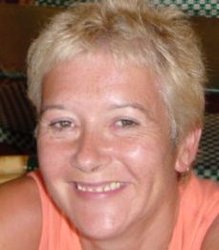The hurricane season starts on June 1 and runs through until the end of November. The Dominican Republic is right in the middle of the hurricane belt, so every year we check weather websites daily and try and predict if and when a hurricane will arrive. We look at squiggles and blobs coming off the West African coast, check wind directions, sea temperatures and the amount of Saharan dust in the atmosphere.
Hurricanes need warm sea temperatures, which is why that is important, and apparently the more dust there is, the less chance of a hurricane.
Hurricanes have alternating male and female names, and the same names are used in a 6 year rotation. However, if there is a big hurricane which causes lots of damage then that name is not used again. So no more Andrew, or David or George or Katrina.
It takes a while for a hurricane to develop. They start as a Tropical Disturbance or a Tropical Wave, and then become a Tropical Depression before morphing into a Tropical Storm which has winds of 40-74 miles an hour. Once the winds get to 74 miles an hour they are a Category 1 Hurricane on the Saffir Simpson scale.They move through Categories 2 to 4, with increasing wind strength and decreasing barometric pressure until the highest which is a Category 5 with winds over 155 miles an hour. I cannot imagine it.
Apart from the damage caused by the wind, the main problem with hurricanes is the storm surge, which can reach 18 feet or nearly 6 metres. Everything which is low lying near to the ocean is simply washed away. One of the main problems we have in the Dominican Republic is that we have several large rivers, and when the hurricanes bring rain, the rivers in the mountains become raging torrents and as they rush through the country into the sea, they get higher and higher, flooding and washing away all the houses along the river banks together with animals and anything else in their path. On the coast after a hurricane or tropical storm the beaches become littered with trees and dead animals which is not too pleasant for the tourists. Even bridges are also washed away making communication very difficult and some areas are totally cut off.
I have been lucky in the 11 years I have been here, as I have only been in the middle of one hurricane, and that was only a Category 1, and a few tropical storms. It is incredibly still before the arrival of the storm, no birds singing, no crickets tweeting and not a breath of wind anywhere. When it arrives though, it does so with a bang, and a ferocious wind appears from nowhere. It is simple enough to be prepared if you check all the weather sites, as they can tell you almost down to the minute at what time the hurricane will hit and how far away from you it will be. You need to make sure you stock up on candles, as the electricity will be turned off to save people being zapped by loose power lines which have blown down, fill the car with fuel, make sure you have a good supply of cooking gas, diesel for the generators, key medicines and water and food. After Hurricane George which was the last major hurricane to hit here in 1998, there was no electricity in some areas for 3 months, no phone nor internet communication, and the shops were shut for several days. It is estimated that George produced US$6 billion of damage, killed around 400 people and left another 155,000 homeless.
Many of the injuries are caused by flying debris, not only trees but also the zinc roofs which many of the houses have. Some of these roofs are held down by rocks, but no way can they withstand winds of over 100 miles an hour, and they have been known to decapitate people as they go flying through the air.
This year has been incredibly quiet so far and not one hurricane has come even close to us, although as I write this a tropical wave has formed near the Cape Verde islands and the spaghetti models show that it could arrive here. At the beginning of the season they tend to turn north before they hit us, but later on they stay on a more southerly route before turning north. Fingers crossed they all stay away, as although it is quite exciting tracking them and forecasting where they might go, it is no fun at all being in the middle of them.
Lindsay de Feliz lives in the middle of nowhere in the Dominican Republic with her Dominican husband, one stepson, 8 cats and 3 dogs. She was formerly Marketing Director of various financial companies in the City of London, and left the UK around 11 years ago to travel the world as a scuba diving instructor. She eventually came to the Dominican Republic on a 6 month contract, fell in love with the country and its people and stayed. Lindsay has a blog www.yoursaucepans.blogspot.com and is currently writing a book about her experiences over the last 10 years.

